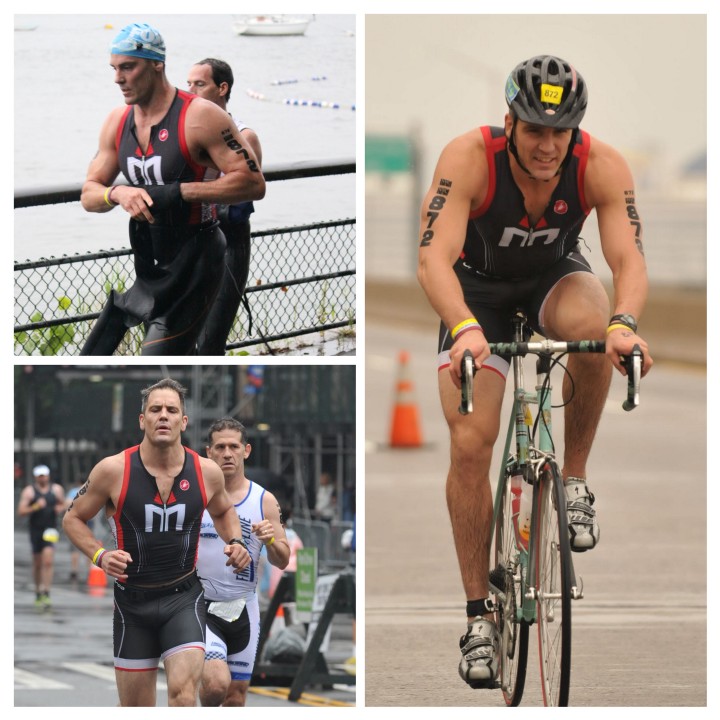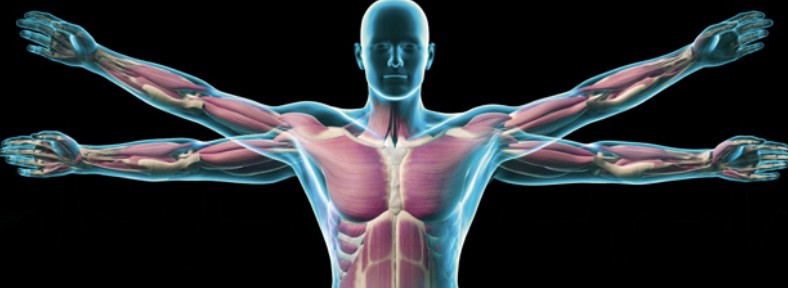Creating Complete, Efficient, And Effective Workouts For Yourself
For any non-trainer out there, here’s a little secret. A good personal trainer should be able to give you a “why” for everything they do throughout the course of the training session. They should be able to tell you why you’re warming up the way you are, why you’re doing the strength training the way you are, why you’re doing the mobility, why you’re doing anything!
And the thing is, it’s not that difficult! It’s not a crazy formula like the picture above. I’ll show you a simple template and within that template you can develop workouts for the week.
This is written for people that may not have access to trainers all the time, or just want to learn a better way to work out by themselves. I think it’ll be beneficial if you know WHAT to do when you walk into your respective gyms or fitness rooms AND also why you’re doing it.
We’re going to break this down into five different parts. You’ll do something for each section and overall it should end up being about 45 minutes to an hour workout. Most importantly, you’ll feel better that you have a reason for everything.
I want you to be cognizant of an important aspect of developing training programs. We’re working with two banks here. Your muscle bank and your mental bank. As you go through your workout you’ll be depleting both. As a result of this, you want to be using your biggest muscles and brain work at the beginning of the workout. What is “brain work”? Well a deadlift or squat that is heavy or a lot of reps, believe it or not, requires a lot of focus and attention. That’s energy. Your brain and your body have only so much energy to expend. You don’t want to be doing difficult movements at the end of the workout when both your brain and body are fatigued.
Also, I’m not going to get into periodization, de-loading, or any types of cycles. That’s a whole other animal and blog post. Periodization is considering different time periods or cycles for your workout program. De-loading refers to off weeks or periods where you decrease the amount of training so you can recover. For my people I tend to take a decrease in training once a month or two depending on the amount of training they do with me.
How Many Sets & Reps?
Before we get started, let’s get this out of the way. Typically, the fewer amount of reps you’re going to do, the more sets. And the more reps you do, the least amount of sets. There are a couple things you want to take into consideration. You don’t want to tax the body or the brain too much. A tough set of 15 reps could be brain taxing just like a really hard set of 4 reps. Here are some potential combinations:
- 3 sets of 12–15
- 4 sets of 10
- 5 sets of 3–6
For the workouts I’m going through below let’s just stick with 3–4 sets of 10 -15 reps.
Also depending on what you’re looking for in your fitness goals. The fitness world typically thinks of these rep ranges for different goals.
- 1–6 Reps — More for power/strength.
- 6–12 Reps — More for strength/hypertrophy (muscle growth).
- 12–15 Reps — More for hypertrophy/strength.
Here is the “Why” and videos for each of the five parts of the workout:
1. Warm Up (5–10 minutes)
No matter how many times you’re working out during the week, you always want to do a good warm up. Think of your body as a sleeping bear when you walk into the gym. You don’t want to make him mad, you want to ease him into getting moving. We’re going to start the neurological system going from parasympathetic (rest & digest) to sympathetic (fight or flight). I think the easiest transition is a bike. There’s no thinking and no strenuous muscle engagement. Remember you don’t want to waste any brain or body work that you’ll need later. Just get the body moving.
After your muscles are getting a little warm we’re going to get you mobile throughout the most important areas from a mobility standpoint, your shoulders, hips and t-spine. We need these areas mobile for the workout and more importantly, life. Here are two videos to show you some “flows” that work through opening up your joints and get your body moving.
2. Dynamic Warm Up (5–10 minutes)
Continuing the warming up, we’re going to get more muscle and brain activation. The first part of the warm up was pretty brainless and little muscle activation. Now we’re going to incorporate movements like: jumping, squatting, holding heavy things, throwing, etc. We want to lube up the joints more and make sure our muscles are really warm before getting into strength training.
A cool way to break down a dynamic warm up is by doing a “jump, throw, carry.” Meaning you’re going to jump somehow, throw something, and carry something for three rounds.
Jump — Could be a box jump, lateral jump, jump rope, etc.
Throw — For the throw you could do a ball slam, wall balls, play catch with a weighted ball.
Carry — And finally for the carry you can do farmer’s carry or hang from a bar for 15 seconds — 1 minute. Just carry something.
That’s a simple way to do the Dynamic Warm Up. You could also get more specific to what you’re about to do in the workout. If you’re doing deadlifts, I would do some heavy carries and jumping to get the grip primed up and the hips moving. If you’re going to do squats, I would do some air squats, walking lunges, and core work like planks. But for now doing things like the below videos will suffice. If you would like more warm up videos, go to my YouTube channel, and look for the playlist Dynamic Warm Ups. Or just email me at [email protected] and I can give you some ideas.
Here are some Dynamic Warm Up videos:
3. Strength Training (15–30 minutes)
I like to be efficient when training so we’re going to break the body up into three parts for each workout. We’ll develop two workouts for the week and we’ll split them up. The three body areas are:
- Push — A. Chest Presses, B. Shoulder Presses.
- Pull — A. Rows, B. Lat Pulls (Pull ups).
- Legs — A. Squats (knee focused), B. Deadlifts (Hip focused).
Within the three parts, I choose one of them for one day, and then do the other ones for the other day. It makes for an efficient workout to superset all three of these at once. So you’ll be doing one of each…….more. For example, we’ll do:
Day1: Chest, Rows, and Squats.
Day 2: Shoulders, Lat Pulls, and Deadlifts.
You can change them up as you want. Just pick one from the three for one day and use the other one for Day 2.
Below you have links to my YouTube channels that have an abundance of movements for each category.
Upper Body Pull/Back — Rows or Pulls. Rows work more of the middle of the back and pulls work more of the sides. A pull would be a lat pull or a pull up. A row would be a seated row or a bent over row. There are a bunch of variations of each.
Legs (Push & Pull) — Hamstrings/Hips or knees. For knees, think of any squat or lunge. And for hips, we’ll be doing any deadlift variation. It could be a straight deadlift or single leg deadlift.
Upper Body Push/Chest or Shoulders — All Presses. Any type of pressing movement, including bench press, shoulder press, push ups, wall walks, etc.
4. Rotation Work (5–10 minutes)
Can you think of any sport that doesn’t involve the athlete rotating in some form? Besides rowing, there really isn’t anything. And as we go through life we’re always going to be turning and rotating therefore using the muscles in our transverse and frontal planes. So let’s train for it! And you’ll find these movements below also work the core very well.
5. Cardiovascular (10–20 minutes)
For many reasons it’s very important to incorporate cardio work into your workout program. Despite what many people believe, it’s not the only way to burn fat. It helps, but the case could be made that strength training is much better for burning fat than cardio. That’s another blog post entirely as there is so much involved. For this post where we’re showing you how to develop workouts for yourself, just know that you should be incorporating it into your workout.

That being said, there are many ways to have fun with cardio work. It doesn’t have to be straight and steady, which many find boring. You could do intervals for 10 minutes instead of straight running for 10 minutes and get a much more effective workout. You can change those intervals up as well. Let’s do 30 seconds on and 30 seconds off for a time period. Or you could do 20 seconds work and 10 seconds rest for a time period. Wanna know what? It’s up to you!
Let’s Develop Some Workouts
Day 1 — Upper Pull, Squats, Chest
A. Warm UP — 5 minute bike to warm up then go through Warm Up #7 that you see up above.
B. For a dynamic warm up let’s do things that are applicable to what we’re going to be doing. Let’s do: 3 rounds of: 30 second hang from a bar, 10 box jumps, and 5 walk out push ups from a squat position.
C. The strength workout, let’s make it easy. 3–4 Sets of each. So do the Pull, then the legs part, then the chest part. Repeat for 3–4 sets.
1. Upper Pull — Pull Ups or Negative Pull ups (Jump up to your chest hitting the bar and control yourself on the way down. 5–10 reps.
2. Legs (Knee focused) — Squats + 2 Lunges. You’ll hold a weight at your chest and do a squat followed by a reverse lunge on each leg. 8–10 reps.
3. Dumbell Chest Press Pulses — You’re going to do laying down chest press. You’ll bring the dumbells down to your chest and then go up half way, then come down and go all the way up. That is a full rep. 8–10 reps.
D. Rotational Work — 3 x 15 Standing Cable Rotations (Both Ways)
E. Cardiovascular Training — Depending on what you have access to, lets do it all out for minute intervals with 30 seconds break for 3–6 rounds depending on your fitness level. So if you have a treadmill, again depending on your fitness, do sprints up hill or just walk up hill on the mill as fast as possible. DONE.
Day 2 — Upper Pull-Rows, Hips/Hamstrings, Shoulder Press
A. Warm Up — 5 minute walk to gradual run on treadmill. And then do #2 above.
B. Dynamic Warm Up — Let’s do 3 rounds of each: Walking lunges 20 steps, arm rotations 5 each way, 20 mountain climbers. You’re ready to go. You’re primed up!
C. Strength Training — Again, we’ll do 3–4 sets of each. You’re going from the pull, to the dead lifts, to the shoulder press. Do it for 3–4 sets.
- Upper Body Pull — Single arm rows. If you want a little variety, do these with a pulse at the bottom. Do 8–12 reps depending on what you’re looking for based on above.
- Single Leg Dead Lifts — Do 8–10 reps on each leg.
- Arnold Shoulder Press — Do 8–10 reps.
D. Rotational Work — 3×20 Seated Ball Throws (Both ways)
E. Cardiovascular — Lets do instead of 1 minute intervals, we’ll do either a long 10 minute run OR :30 of work and :30 of rest for 10 rounds. You choose! DONE!
There are a million ways to develop a program. I definitely feel that these 5 aspects of a workout should be incorporated because there is a reason they are in the order they’re in and they also help you have an efficient and effective session. As far as incorporating cycles or deloading, that’s up to you. If you have any questions at all, please reach out to me and I’ll answer them the best I can.
Happy Training!!







Responses